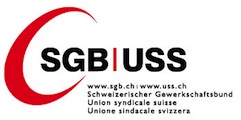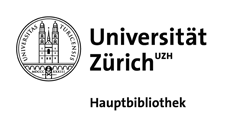Publications des institutions partenaires
WP - 2021-03-10 - Romain Baeriswyl, Lucas Marc Fuhrer, Petra Gerlach-Kristen and Jörn Tenhofen: The dynamics of bank rates in a negative-rate environment - the Swiss case
This paper documents the change in banks' interest rate setting behaviour in a negative-rate environment. In a positive-rate environment, the pricing of mortgages and deposits follows the dynamics of capital market rates for comparable maturities. When capital market rates fall below zero, the dynamic of mortgage and deposit rates changes. Because deposit rates tend to be sticky at...
Institution partenaire
English / 10/03/2021
WP - 2021-03-04 - Robert Oleschak: Financial inclusion, technology and their impacts on monetary and fiscal policy: theory and evidence
In economies with a low level of financial inclusion (FI), most activities are settled in cash and are thus more difficult to trace, record, and tax. I show theoretically that economies with inefficient financial technologies exhibit low levels of FI and of tax revenue and that using an inflation tax as an additional source of income improves welfare. Improvements in technology lead...
Institution partenaire
English / 04/03/2021
WP - 2021-02-23 - David Chaum, Christian Grothoff and Thomas Moser: How to issue a central bank digital currency
With the emergence of Bitcoin and recently proposed stablecoins from BigTechs, such as Diem (formerly Libra), central banks face growing competition from private actors offering their own digital alternative to physical cash. We do not address the normative question whether a central bank should issue a central bank digital currency (CBDC) or not. Instead, we contribute to the...
Institution partenaire
English / 23/02/2021
WP - 2021-01-18 - Jens H. E. Christensen and Nikola Mirkov: The safety premium of safe assets
Safe assets usually trade at a premium due to their high credit quality and deep liquidity. To understand the role of credit quality for such premia, we focus on Swiss Confederation bonds, which are extremely safe but not particularly liquid. We therefore refer to their premia as safety premia and quantify them using an arbitrage-free term structure model that accounts for time-...
Institution partenaire
English / 18/01/2021
WP - 2021-01-15 - Till Ebner, Thomas Nellen and Jörn Tenhofen: The rise of digital watchers
Many consumers use payment instruments to control their budget. Previously, such behavior has been associated with checking disposable cash ("pocket watching"). Based on recent survey data, we show that "digital watchers" have emerged, i.e., noncash payers who use digital applications to control their budget. Both watcher types have distinct characteristics. Pocket watchers tend to...
Institution partenaire
English / 15/01/2021
WP - 2020-12-29 - Lucas Marc Fuhrer, Marc-Antoine Ramelet and Jörn Tenhofen: Firms' participation in the COVID-19 loan programme
This paper analyses the determinants of firm participation in the Swiss COVID-19 loan programme, which aims to bridge firms' liquidity shortfalls that have resulted from the pandemic. State guaranteed COVID-19 loans are widely used by Swiss firms, with 20% of all firms participating, resulting in a sizeable programme of 2.4% of GDP. We use a complete firm-level dataset to study the...
Institution partenaire
English / 29/12/2020
WP - 2020-12-15 - Basil Guggenheim, Sébastien P. Kraenzlin and Christoph Meyer: (In)Efficiencies of current financial market infrastructures - a call for DLT?
We use unique individual bank-to-bank repo transaction data to empirically assess the efficiency of the existing Swiss financial market infrastructure (FMI) for executing delivery versus payment transactions. This approach enables us to identify its current benefits and drawbacks and discuss how these could be addressed and to what extent distributed ledger technology (DLT) could provide...
Institution partenaire
English / 15/12/2020
WP - 2020-12-08 - Miriam Koomen and Laurence Wicht: Demographics, pension systems, and the current account: an empirical assessment using the IMF current account model
This paper empirically assesses the link between demographics, pension systems, and current account (CA) balances using the IMF External Balance Assessment (EBA) model. We propose two refinements to the EBA model. We first refine the existing demographic variables to better account for the entire population age structure of countries. Compared to the EBA specification, we find a more...
Institution partenaire
English / 08/12/2020
WP - 2020-12-08 - Yannic Stucki and Jacqueline Thomet: A neoclassical perspective on Switzerland's 1990s stagnation
We study Switzerland's weak growth during the 1990s through the lens of the business cycle accounting framework of Chari, Kehoe, and McGrattan (2007). Our main result is that weak productivity growth cannot account for the stagnation experienced during that time. Rather, the stagnation is explained by factors that made labour and investment expensive. We show that increased labour...
Institution partenaire
English / 08/12/2020
WP - 2020-12-01 - Fabian Fink, Lukas Frei and Oliver Gloede: Short-term determinants of bilateral exchange rates: A decomposition model for the Swiss franc
This paper develops an FX factor model to decompose short-term bilateral exchange rate dynamics into different global factors and local uniqueness. We apply the model to the Swiss franc exchange rates against the US dollar (USDCHF) and the euro (EURCHF) between 2006 and 2018 and decompose daily dynamics into three global factors: risk, US dollar, and euro. The model captures daily...
Institution partenaire
English / 01/12/2020
WP - 2020-10-16 - Laurence Wicht: A multi-sector analysis of Switzerland's gains from trade
This paper quantifies Switzerland's gains from trade using a multi-country multi-sector general equilibrium Ricardian trade model. The model calibration relies on a novel data source on sectoral linkages to provide a Switzerland-centric analysis. I find that using this novel dataset generates 13.4% higher estimates of the gains from trade for Switzerland, as other data sources tend...
Institution partenaire
English / 16/10/2020
WP - 2020-09-18 - Terhi Jokipii, Reto Nyffeler and Stéphane Riederer: Exploring BIS credit-to-GDP gap critiques: the Swiss case
A growing body of literature has highlighted two important caveats to the credit-to-GDP gap as advocated by the Bank for International Settlements (BIS). The first relates to the approach used to normalise credit (i.e., dividing nominal credit by GDP). In this regard, critics have argued that a normalised measure of credit runs the risk of being affected by GDP movements that may or...
Institution partenaire
English / 18/09/2020
WP - 2020-09-16 - Enzo Rossi and Vincent Wolff: Spillovers to exchange rates from monetary and macroeconomic communications events
We study the tightness of the link between U.S. monetary and macroeconomic communication events and the exchange rate movements against the USD of four major currencies - the euro, the Swiss franc, the Brazilian real and the Mexican peso - since the global financial crisis (GFC). We find three main results. Approximately 20 percent of the U.S. communications events were associated...
Institution partenaire
English / 16/09/2020
WP - 2020-09-04 - In Do Hwang, Thomas Lustenberger and Enzo Rossi: Does communication influence executives' opinion of central bank policy?
We analyze the economic impact of central banks sensed by business executives in a sample of 61 countries from 1998 to 2016. Based on a survey conducted by the Institute for Management Development (IMD), we find compelling evidence that intensive central bank communication worsens the perceived impact. During the global financial crisis (GFC), this effect became even stronger. In...
Institution partenaire
English / 04/09/2020
WP - 2020-09-02 - Peter Kugler and Samuel Reynard: Money, inflation and the financial crisis: the case of Switzerland
Unconventional monetary policies have sometimes raised inflation-related fears that have not materialized. Switzerland presents an interesting case, as the central bank reacted to an appreciating currency by injecting Swiss francs through foreign exchange interventions, and bank lending increased considerably throughout the financial crisis. The low inflation that occurred after the...
Institution partenaire
English / 02/09/2020
WP - 2020-09-02 - Sébastien P. Kraenzlin, Christoph Meyer and Thomas Nellen: COVID-19 and regional shifts in Swiss retail payments
This paper analyzes card payments to the retail sector in Switzerland during the COVID-19 crisis. We provide evidence on aggregate effects and regional shifts. Pronounced shifts - which persisted post-lockdown - can be observed from urban to suburban and rural areas and among cantons. Data allow us to identify directly two sources of shifts: "tourists and business travelers," and "e-...
Institution partenaire
English / 02/09/2020
WP - 2020-08-19 - Christian Grisse: Lower bound uncertainty and long-term interest rates
Nominal interest rates are constrained by an effective lower bound, but the level of the lower bound is uncertain. This paper uses a simple shadow rate term structure model to study how lower bound uncertainty affects long-term interest rates. The main result is that a decline in lower bound uncertainty, in the sense of a mean-preserving contraction of the lower bound distribution,...
Institution partenaire
English / 19/08/2020
WP - 2020-07-29 - Tim D. Maurer and Thomas Nitschka: Stock market evidence on the international transmission channels of US monetary policy surprises
We decompose unexpected movements in the stock market returns of 40 countries into different news components to assess why expansionary US monetary policy surprises are good news for stock markets. Our results suggest that prior to the zero lower bound (ZLB) period, federal funds rate surprises affect foreign stock markets mainly because such surprises are associated with news about...
Institution partenaire
English / 29/07/2020
WP - 2020-07-29 - Sophie Altermatt and Simon Beyeler: Shall we twist?
We study the implementation and effectiveness of Operation Twist, which represents the origin of today's unconventional monetary policy measures. Operation Twist serves as a perfect laboratory to assess the usefulness of such balance sheet policies because at that time interest rates were not at their lower bound and the economy was not in a historic turmoil. We assess the actions of...
Institution partenaire
English / 29/07/2020
WP - 2020-07-29 - Toni Beutler, Matthias Gubler, Simona Hauri and Sylvia Kaufmann: Bank lending in Switzerland: Capturing cross-sectional heterogeneity and asymmetry over time
We study the bank lending channel in Switzerland over three decades using unbalanced quarterly bank-individual data spanning 1987 to 2016. In contrast to the usual empirical approach, we take an agnostic stance on which bank characteristic drives the heterogenous lending response to interest rate changes. In addition, our empirical model allows for a changing lending reaction...
Institution partenaire
English / 29/07/2020
Pages
Le portail de l'information économique suisse
© 2016 Infonet Economy












